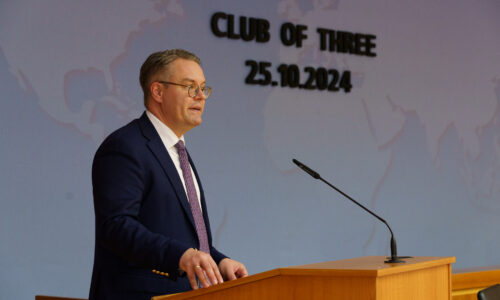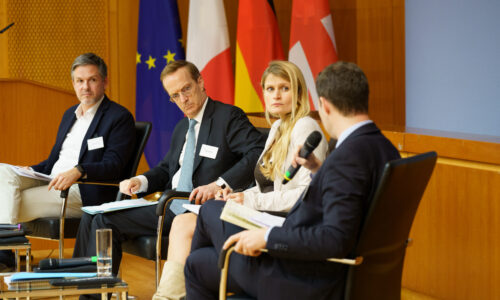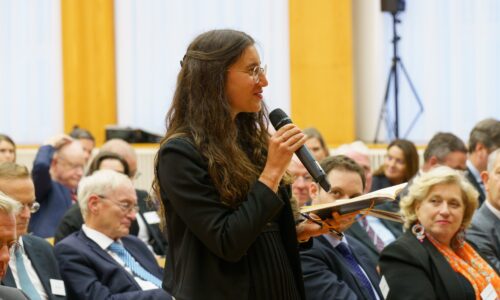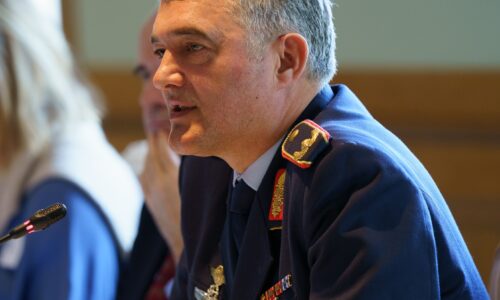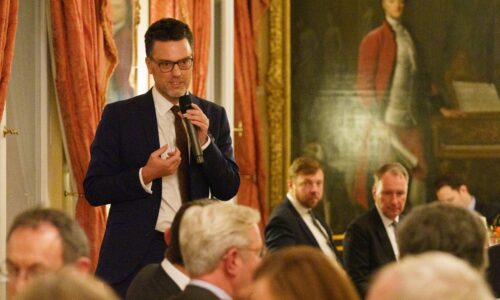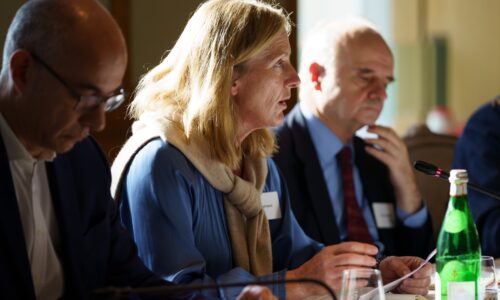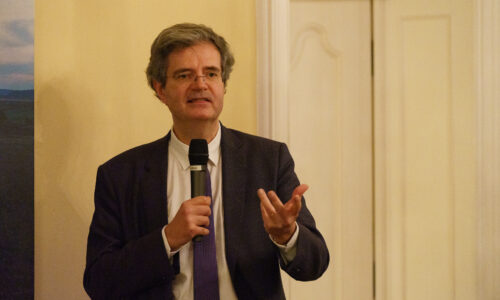Held in October in Berlin, the 2024 Plenary meeting of the Club of Three was organised in partnership with the Hertie Stiftung and dedicated to the topic of European defence and security.
This exchange with some 50 senior cross-sector figures from France, Germany, the UK and other European countries took place at a critical time for Europe, ahead of the U.S elections and with new parliaments and governments in France and the UK as well as in Brussels.
Participants took stock of the situation in Ukraine and discussed ways of strengthening Europe’s own defence. There were sessions on defence procurement, finance as well as other critical issues including nuclear deterrence, building resilience and the necessity to associate civil society in these efforts.
The first part of the meeting was hosted by the German Foreign Office on the Friday afternoon, during which the Minister of State Tobias Lindner gave a keynote address. This was followed by a dinner at the residence of the British Ambassador. The Saturday sessions were held at the Adlon Kempinski.
During the exchanges, participants were reminded many times of the urgency to prepare – as Europeans – to face the threat posed by Russia, which was existential. Two and a half years after Russia’s full invasion of Ukraine, there were serious concerns that Europe had not yet woken up to this reality.
The situation on the ground favoured Russia which had adjusted well to Western sanctions. It had not taken the bait in the Kursk region and was relentlessly pursuing its objectives in the Donbas while continuing to demolish Ukraine’s critical infrastructure. At the same time, whether the next U.S President is Trump or Harris, it was unlikely that another US package of $60bn would be dispatched again.
Any resolution in the form of a Minsk III deal, a new Budapest Memorandum, or other treaty could not be envisaged until Russia had been effectively confronted. There was an expectation that its arms production might reach a tipping point around 2026/27. But Ukraine was burning out at a faster rate in the meantime.
Financing the rebuilding of a credible defence system without free-riding was going to be a difficult problem to crack for Europeans. With little money to throw around, a partial solution was to turn to innovation, agility, private sector partnerships, and a lighter regulatory environment.
Without the level of U.S support it had received until now, Europe would face hard choices. The main options for building a European nuclear deterrent all had drawbacks in terms of cost and political acceptability both domestically and internationally.
Participants included: Philippe Errera (Executive Vice President, Safran); Elisabeth Braw (Senior Fellow, Atlantic Council); Ulrike Franke (Senior Policy Fellow, ECFR); Charles Fries (Deputy General Secretary, EEAS); Catherine Calothy (Deputy Director, Quai d’Orsay); Brigadier General Frank Graefe (Deputy Chief of Staff, German Air Force); Thomas Gottschild (Managing Director, MBDA Germany); Ruth Harris (Director, RAND Europe); Elisabeth Hauschild (Senior Vice President, Diehl Stiftung & Co.); Sylvain Berger (Diplomatic Adviser, IHEDN); Daniel Hallett (Director, Babcock International); Nick Pickard (Director Europe Bilateral, FCDO); Norbert Röttgen (German MP, CDU); Norman Heit (Security and Resilience Director, Vodafone); Élie Tenenbaum (Director, Security Studies Centre, IFRI); and David Williams (Head of Europe Defence Policy, BAE Systems).

